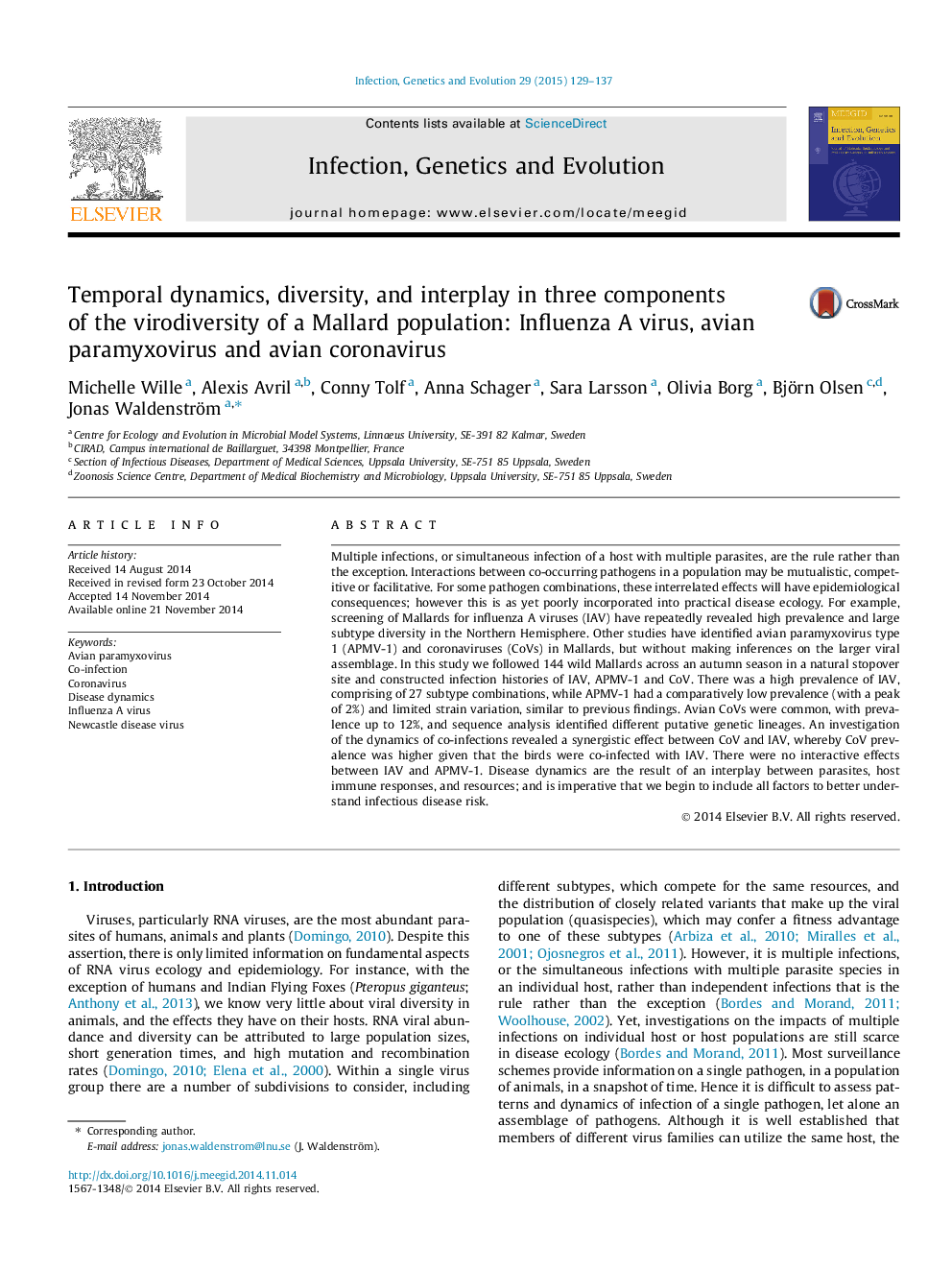| Article ID | Journal | Published Year | Pages | File Type |
|---|---|---|---|---|
| 5909322 | Infection, Genetics and Evolution | 2015 | 9 Pages |
â¢In the autumn of 2011, 3029 samples collected from 144 Mallards.â¢A high prevalence of influenza A with 27 different HA/NA subtype combinations.â¢A bimodal seasonal prevalence curve, up to 12%, of gammacoronavirus.â¢An increased coronavirus prevalence given birds are coinfected with influenza A.â¢Low prevalence and diversity of avian paramyxovirus type 1.
Multiple infections, or simultaneous infection of a host with multiple parasites, are the rule rather than the exception. Interactions between co-occurring pathogens in a population may be mutualistic, competitive or facilitative. For some pathogen combinations, these interrelated effects will have epidemiological consequences; however this is as yet poorly incorporated into practical disease ecology. For example, screening of Mallards for influenza A viruses (IAV) have repeatedly revealed high prevalence and large subtype diversity in the Northern Hemisphere. Other studies have identified avian paramyxovirus type 1 (APMV-1) and coronaviruses (CoVs) in Mallards, but without making inferences on the larger viral assemblage. In this study we followed 144 wild Mallards across an autumn season in a natural stopover site and constructed infection histories of IAV, APMV-1 and CoV. There was a high prevalence of IAV, comprising of 27 subtype combinations, while APMV-1 had a comparatively low prevalence (with a peak of 2%) and limited strain variation, similar to previous findings. Avian CoVs were common, with prevalence up to 12%, and sequence analysis identified different putative genetic lineages. An investigation of the dynamics of co-infections revealed a synergistic effect between CoV and IAV, whereby CoV prevalence was higher given that the birds were co-infected with IAV. There were no interactive effects between IAV and APMV-1. Disease dynamics are the result of an interplay between parasites, host immune responses, and resources; and is imperative that we begin to include all factors to better understand infectious disease risk.
